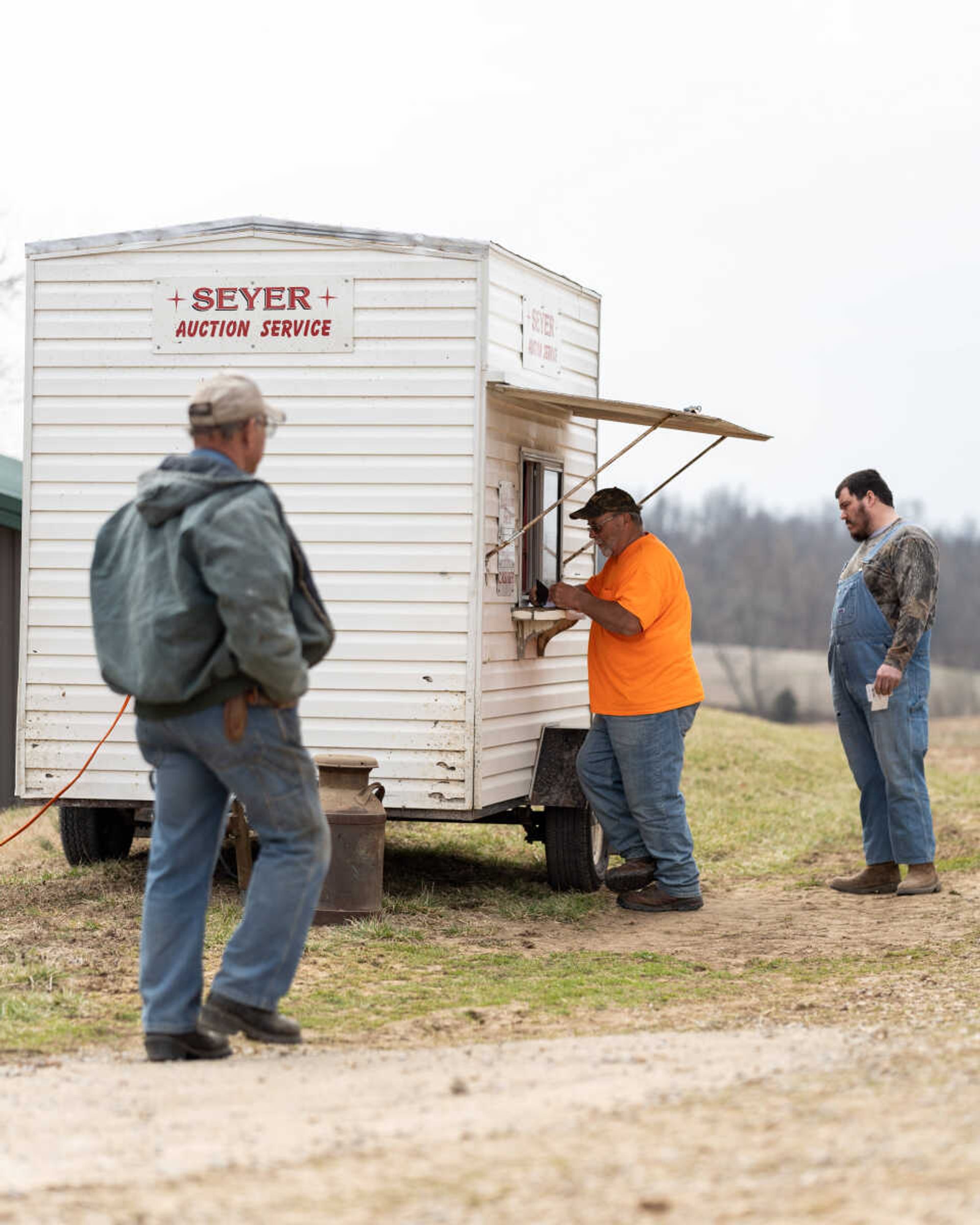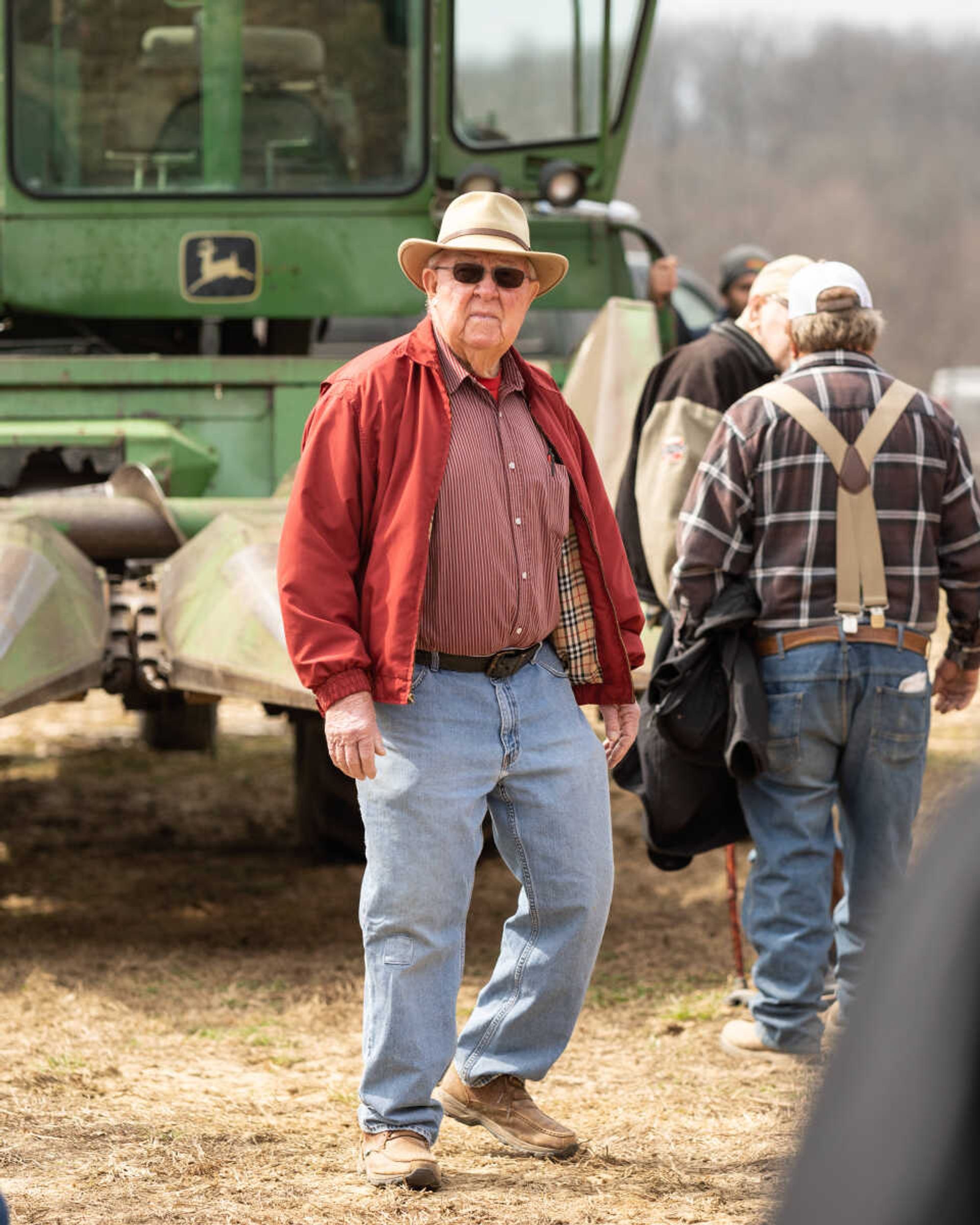The Life of an Auctioneer: Auctioneers discuss what they’ve learned about profession, region through selling what remains
You can tell a lot about a person, an area, a culture, by what people leave behind. It’s something Charley and Verla Mangels, Chester and Kristi Seyer, and Brenda and Mark Kern know well. The group, along with Mary Seyer and Theresa Seyer, and in the past, L.R. and Janet Brandes, works together as Seyer Auctioneering, and they are, in a sense, cultural anthropologists who observe and tell stories about the people of Perry, Cape Girardeau and Bollinger Counties...
You can tell a lot about a person, an area, a culture, by what people leave behind.
It’s something Charley and Verla Mangels, Chester and Kristi Seyer, and Brenda and Mark Kern know well. The group, along with Mary Seyer and Theresa Seyer, and in the past, L.R. and Janet Brandes, works together as Seyer Auctioneering, and they are, in a sense, cultural anthropologists who observe and tell stories about the people of Perry, Cape Girardeau and Bollinger Counties.
It’s a profession that has been passed down through apprenticeship; Chester can trace the auctioneers he and his family members learned from back two generations before him.

Charley has been at the profession the longest: It was through an invitation from Chester’s father, Andrew Seyer, that he first got involved in the 1970s. Andrew, Chester says, began auctioneering when he was 16 years old and went on to be one half of Schlimpert and Seyer Auctioneering with auctioneer Clarence Schlimpert in 1967. Charley learned to auctioneer, his wife Verla Mangels says, through singing an auctioneering song.
Chester learned about the trade from his father, who told him to start auctioneering when he was younger; it wasn’t until 2001 that Chester decided to take it seriously, went to auctioneer school and began auctioneering at sales. After his dad passed away, other family members, friends and neighbors have been a part of the business throughout the years, too.
Mark grew up going to estate sales with his parents; he says he has always enjoyed auctioneering and recently finished auctioneer school. When Chester gave him the opportunity to work with Seyer Auctioneering, he took it. He says he enjoys everything about the process.
“When you’ve got good stuff and they’re bidding, you can sell all day, never need a break,” Chester says. “But when you’re begging and begging, it just drains you.”
Some of the most interesting items they’ve sold include a potato fork that brought $17, even though the next day, Charley says he had to “beg” to get $1 for a brand-new one at a different auction. They once sold three egg cartons from Bob Schnurbusch’s store in Old Appleton for $900. They have also sold a baptismal font from a Baptist church in Oak Ridge.

Kristi, who clerks, cashiers, makes the listings, takes pictures of items, posts the photos online and does the billing, says one of her favorite stories is the time a piece of pottery sold for a dollar and the buyer thought he had gotten a good deal on a piece of prestigious pottery, showing it to many people in attendance. As it turns out, the piece had been made by the son of the estate owner, in art class.
“Everybody says, ‘You know the value of everything?’ To me, it’s nothing but numbers, because it’s worth what a willing soul is willing to give,” Chester says. “You hold [an item] up, the public will tell you if you’ve got something good. The value of it.”
The best sales, Chester says, are at two-story houses in rural areas, because often, the owners of these homes were conservative and didn’t throw things away. He says auctions in town usually do not contain as many antiques, because when people moved from the country into town, they threw away their old belongings that would be worth something today. Charley also mentions that often, if a couple didn’t have children, their belongings will be in good condition.
When going through someone’s belongings before a sale, “You’ve got to look at everything,” says Brenda, who clerks, cashiers and holds items up at sales. She says they once worked a sale at which they found nearly $3,000 in cash stuffed in the fingers of a pair of gloves in a cigar box. Chester adds that’s especially true for people who lived through the Great Depression.
An auctioneer must know how to read people’s body language.
“There’s two pretty good signs [that someone is going to bid],” Charley says. “Women and men are different: If there’s a wagon there and a woman’s got her eye on something, you know she’s a prospect. A man out in the farming stuff, if he reaches in his pocket to be sure he can pull his number out, he’s a prospect. He checks to be sure he’s got his number handy before that item comes up.”

It also helps, Charley says, to encourage people while he’s auctioneering, joking with them to get them to bid. It’s up to the auctioneer to choose who to pick to open the bid, and then it is the other person’s turn to bid; there shouldn’t be two people on a bid at the same time, Chester says.
When no one bids, the person holding up items has to look strategically at the other items on the wagon and find something to put with it that might garner a starting bid. There’s also a method to the order they auction off the items on wagons, saving the best items that will bring the most money for the middle of the sale. Chester says they run approximately 80 items an hour, and the person holding up the items plays an important role in keeping the auction moving along swiftly: They have to have the next item in the air as the one before it is selling so the auctioneer can feed off of the energy. It takes approximately an hour to sell a wagonload of items, Chester says, and they try to have each auction finished by 4 p.m.
One of the most challenging parts, Chester says, is at sales when it is difficult to get people to bid.
“You go through somebody’s stuff, a lifetime of collecting … [in] one day, we’re getting rid of what they collected in a lifetime,” Chester says.
Brenda says this is a sad experience.
“It’s something like you know that that [item] was their pride and joy, they collected that, and then we’re trying to sell it, and you can’t get a dollar for it,” she says.
Ultimately, it is an act of trust for a family to ask them to sell their loved one’s belongings, Chester says. In the process, Charley, whom Chester describes as “the best opening auctioneer there is,” says he makes “a lot of good friends.”
“It makes you feel good when you finish [a sale] if the family feels like you’ve done them a good job,” he says.
Every auctioneer has a different amount of stamina; Charley says he can roll for two to three hours before losing the sharpness from his words. Through all they learn about the people and the region from the things they sell and all the words he speaks while doing the job of auctioneer, Chester uses one word to describe the profession: action.
“Every auction is different,” he says.
“It’s an experience,” Charley agrees.
Connect with the Southeast Missourian Newsroom:
For corrections to this story or other insights for the editor, click here. To submit a letter to the editor, click here. To learn about the Southeast Missourian’s AI Policy, click here.











